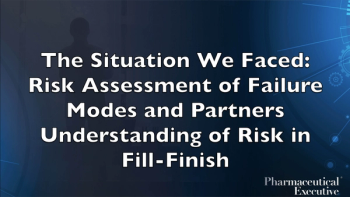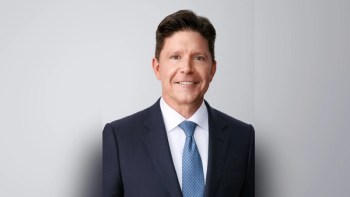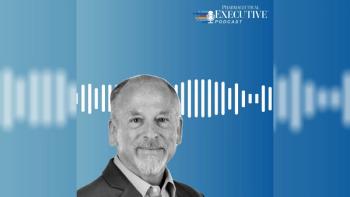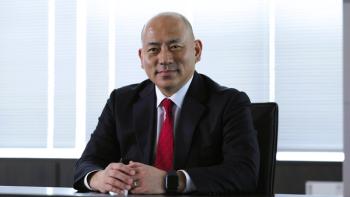
- Pharmaceutical Executive: January 2023
- Volume 43
- Issue 01
Enabling Authenticity
Natalie Bickford, chief people officer at Sanofi, reveals how she approaches the employee experience, which ultimately influences employee retention, and discusses the importance of a corporate DE&I strategy in those efforts.
All pharmaceutical companies must prioritize their employees in order to have the right talent and ultimately bring treatments to the patients who need them. In today’s world, keeping and recruiting talent is a constant struggle, both within the pharma industry and elsewhere. Natalie Bickford, chief people officer at Sanofi, works tirelessly to ensure that the employees feel valued, have growth, and have a long tenure. In her role, Bickford is responsible for all things HR (called “people and culture” within Sanofi), global real estate, and facilities and record management teams.
“The reason, in particular, that I have real estate and facilities management in my brief is because, if you take the workplace and the environment that we create for people in the workplace and add it to everything we do from a people and culture perspective, that [to me] is the employee experience,” says Bickford.
She describes Sanofi’s new French headquarters in Paris as a combination of home and a close-knit community rather than a traditional office, which she believes will help to drive collaboration. While there are fewer than 500 people at their new headquarters, there are many services to help employees manage their daily lives.
“You need to give people a reason to want to come to the workplace. And I don’t think that a foosball table and a few bean bags is the solution anymore,” Bickford tells Pharm Exec. “I’m really excited about how we
combine those two parts of my jobs together to deliver an outstanding employee experience.”
An example of how Sanofi is prioritizing its employees is how Bickford, herself, is supported.
“If I take myself as an example, my family and I are in England. I work in Paris [on] Monday to Friday. I can never get my work clothes dry-cleaned because the dry cleaners are closed when I come to work; they’re closed when I go home; and I’m not here on the weekends to deal with it,” she says. “Now, we have somewhere for me to drop my dry cleaning in our headquarters, and it gets delivered back to me two days later. It seems like a small thing, but it makes a big difference to me.”
Other employee services Bickford and the team at Sanofi prioritize include, but are not limited to, assistance with childcare and caring for elderly parents and other family members. Bickford shared that, while she can deal with any kind of stress in the workplace, focusing on work can be difficult if something is happening with family members. Again, she emphasizes the need to support the employee.
“It’s offering employees personal services in the workplace that allow them to feel supported because some of these daily tasks are being taken care of for them,” adds Bickford.
Authenticity matters
Diversity, equity, and inclusion (DE&I) is important for every business. When Bickford arrived at Sanofi, she recalls the good work the company was doing globally around gender equity. The first thing she did was
create a DE&I strategy for the organization, which is based on three pillars:
- Building representative leadership
- Creating a work environment where employees can bring their best selves
- Engaging with the company’s diverse communities
“[The first pillar is] focused on building a diverse workforce that represents the communities that we serve,” says Bickford. “In there, for example, we have our gender target, which we’ve been very ambitious about; and [we] said by 2025, we would like to have 50% of all of our senior leadership positions held by women and 40% of our top 450 roles, [our executive population], held by women by 2025.”
Bickford explains that the company has clear policies on appointments at the executive level. For example, they won’t hire someone if the final two to three candidates aren’t gender-balanced. Instead, they will shift from looking strictly internally for candidates to externally as well in order to ensure all genders have equal opportunity and consideration. After that time, they will appoint the best candidate for the role irrespective of their gender.
Another program Bickford and team are pursuing is to train 140 female executives. This is a 12-month program for women all around the world who are of different nationalities and ethnicities. Each person has a sponsor and is given access to networking events and can participate in various opportunities.
“That’s an example of the sort of thing that we’re doing to make sure that, as I say, it’s not just fine words—that we’re really delivering against our objective,” says Bickford.
The second pillar is being executed through the company’s multiple global employee resource groups (ERGs). Each one has a member of the executive committee as a sponsor. One example Bickford described was a dedicated event held during Pride Month, where Julie Van Ongevalle, executive VP of consumer healthcare, Sanofi, who’s also the executive sponsor of the LGBTQ+ network, took part in. Taking place in Paris, this event for the ERGs had approximately 6,500 employees in attendance, live and remote. One person, who attended the event remotely, shared that they intended to come out to their colleagues—something they had never done before.
“I think it’s quite extraordinary that, in this day and age, if you’re not able—for example—to share your sexuality in the workplace, how can you possibly be bringing your best self?” Bickford tells Pharm Exec.
The final of the three DE&I pillars has an external focus, as compared to the first two with an internal focus.
“This [third pillar] is about how we show up to the communities that we’re involved in. This includes things like supplier diversity and work on diversity in clinical trials, but [it’s] also about making sure that every leader in Sanofi has an experience in corporate social responsibility in a very structured way,” says Bickford. “This doesn’t mean going and doing the one-day
volunteering. This is about really having an impact in your community. That’s something, again, that we kicked off this year; and every leader will have needed to have an approved activity that they will then experience by 2025 as well.”
A purposeful path
Not all executives in pharma got their start in this industry, which is the case for Bickford. She began her career in the banking industry—specifically at Barclays—in 1993 after graduating during a recession, explaining that banks and accounting firms were the only companies actively recruiting at that time. In addition, Bickford didn’t intend to work in HR. She studied international politics at the University of Warwick (London, UK). Realizing she didn’t want to be a banker, she shifted to recruitment.
“But what I realized relatively early on was that I didn’t want to be a banker, and it was mainly because I couldn’t really touch and feel the product that I was selling. I also wasn’t entirely convinced at all times as to the purposefulness of what I was doing,” says Bickford. “After four years, I moved into graduate recruitment and development within the bank, which I loved. That gave me the beginning of my passion for HR.”
From there, Bickford left the banking industry and worked in several different industries for multiple organizations. But it was a personal experience—and recruiter—that led her to pharma.
“My mother developed breast cancer and was prescribed a drug, which at the time was pretty revolutionary,” says Bickford. “It was one of the early/better products on the market. When I was called by a headhunter, asking if I’d be interested in going to AstraZeneca to run HR for the UK, I realized that it was AstraZeneca who was making the drug that was essentially saving my mother’s life. I went to the interview, and that was really my entry into the pharma world.”
Staying with AstraZeneca for two years, she then made the leap into the hospitality sector, where she stayed for 12 years.
“I learned a lot of very good discipline around how to really make every penny/euro/dollar count to focus on what was most important and to be very pragmatic around what was going to make the most difference from the people experience perspective,” says Bickford. “To be honest, I was kind of fairly set on staying [in hospitality] for the rest of my career. Then I got a phone call from Paul Hudson (current CEO of Sanofi), who I’d worked with at AstraZeneca many years ago, asking me if I’d be interested in considering this position [at Sanofi]…I’d always said I would go back to life sciences because it was something that I felt very passionate about, but I didn’t necessarily anticipate really making that move.”
As it happens, Bickford took another leap and returned to the pharma industry.
“The thing that makes life sciences stand out for me is this real sense of higher purpose that people have [when] working in this industry; and I really don’t believe that people come to Sanofi to earn their salary or their bonus or their long-term incentives. They’re coming to work because they feel a passion for changing people’s lives, improving people’s lives,” she says. “If we think about what our purpose is, which is around chasing the miracles [of] science to improve people’s lives, people feel that—whatever part of the business, whether they’re in R&D, whether they’re in HR, whether they’re in manufacturing. I think that’s really powerful, and it’s very addictive to me as an environment to work within.”
Mentorship vs. role models
While Bickford is a great believer in having mentors and sponsors (and a clear distinction between the two), she explains she was never truly part of a formal mentoring program. Instead, when she looks back on her career, she recalls managers who took a chance on her.
“Those pivotal moments have usually involved someone being prepared to take a risk on me,” says Bickford. “I don’t think that happens by accident. It’s very important to build relationships and to maintain them, and sometimes over years and years. Because at a certain point, that relationship [other than giving you benefits and value as you go along] could unlock an opportunity for you that might not have been there before.”
In addition to managers being willing to take a chance on her, there were people she looked up to who (somewhat indirectly) helped her along her journey. Alison Brittain, CBE, currently the CEO of Whitbread, was one of those people. Early on in her career, Bickford worked for Brittain during her time at Barclays and describes how Brittain was unabashedly herself.
“In those days, a lot of senior successful women were having to behave a little bit like men, which I don’t think is the case anymore, (which is a good thing),” says Bickford. “[Brittain] always stood out to me as somebody who was very authentic before we knew the term ‘authentic.’ But she was very authentic. She was irreverent, and she laughed at things. She was confident.”
Eventually, Brittain went on to be the CEO of several FTSE 100 companies and has moved into the non-executive director (NED) world, becoming a chair of a couple of organizations as well as sitting in NED positions for large organizations.
“She’s always been a trailblazer for me, and I greatly admire that,” says Bickford. “Because it doesn’t matter how senior you might think you are in an organization, there are always people to admire and to learn from.”
Balancing work and life
Like many, in addition to her role at Sanofi, Bickford must also balance family life. Her kids are older now, but after taking maternity leave with her two children, she came back to work full time. She describes how women in the industry, at that time, would have their careers stalled if they didn’t return to work right away.
“In those days, you’d look at potential in terms of ‘have they gotten to this level by this age?’ Certainly, the concept of being high potential and working part time just was not the thing,” says Bickford. “If you went part time, you were essentially saying, ‘I’m no longer ambitious to have an impact.’ And so, I came back to work full time.”
Just as she’d had a role model to look up to, Bickford wanted to be a role model for her children.
“I wanted them to see that you could be a parent and have a career at the same time and that careers weren’t just for dads or [that] mums just stayed at home,” she says. “When I look at my children, who are now 19 and 22, and I look particularly at my daughter (who’s 22), it wouldn’t occur to her that she couldn’t just go out there and do whatever she wants to have a go at. I’d like to think that I’ve played a part in that by being a role model for her.”
However, Bickford describes the need for better equality all around—not just in the workplace.
“I think we’re getting to a place where we have far better equality in the office. I’m not sure that we have such great equality at home,” she argues. “I often say it’s the small things that make the difference. My husband has always been a brilliant support. But he will say to me, ‘What are we doing this weekend? Where are we going on holiday in the summer? Did you book a taxi to go out to dinner?’ I would [also] always be the one who went to or at least knew when the childrens’ parents evening conferences were with their teachers; organized their birthday parties; made sure they took presents to other kids’ birthday parties; that they had clothes that fitted them. So, I do think that if we could drive more equality at home, it will help women with their careers.”
While the industry has come a long way, there are still many efforts needed to ensure employees feel valued and supported and that the workplace is diverse in order for people to be fully and authentically themselves, which ultimately will enable them to impact more lives. And Bickford is making great strides to do just that.
Meg Rivers is Pharm Exec’s Managing Editor and can be reached at
Articles in this issue
almost 3 years ago
Key Factors Attributing to a Successful Product Launchalmost 3 years ago
Closing the Digital Gap: FDA’s Oversight of Social Mediaalmost 3 years ago
Sales-Rep Compensation: Adding Long-Term Incentives to Mixalmost 3 years ago
Co-creating New Innovationsalmost 3 years ago
The Potential Impact of the IRAalmost 3 years ago
Patient Hubs Continue Growthalmost 3 years ago
Social Media’s Complex Climbalmost 3 years ago
Industry Workforce Seeks Clarityalmost 3 years ago
Cybersecurity Threats & PharmaNewsletter
Lead with insight with the Pharmaceutical Executive newsletter, featuring strategic analysis, leadership trends, and market intelligence for biopharma decision-makers.





